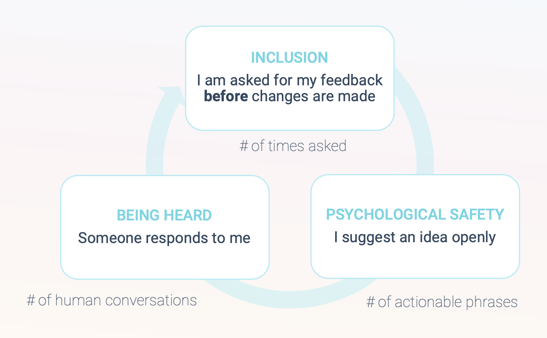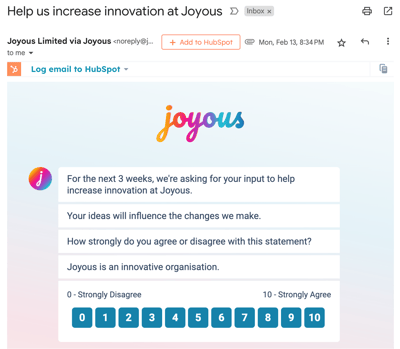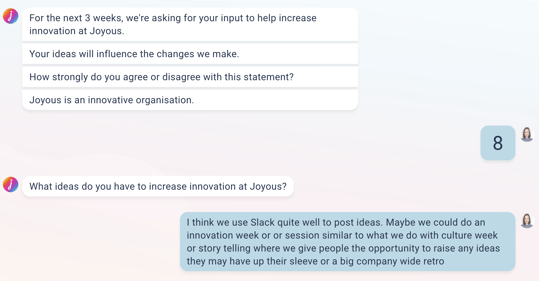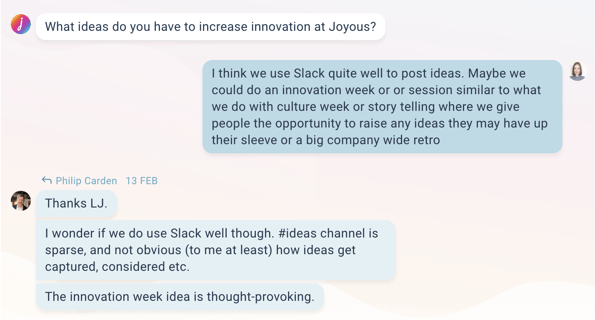The traditional definition of a feedback loop is a process in which the outputs of a system are circled back and used as inputs. While there are many types of feedback loops, the one we champion at Joyous is the Open Feedback Loop.
The Open Feedback Loop seeks feedback (inputs) from team members, allows them to respond openly and have a conversation with another human about their feedback, and results in the team member feeling heard (outputs). Feeling heard encourages team members to continue to share their feedback, and thus the loop continues.
🗒️ The Open Feedback Loop expands into a broader Joyous Impact Loop.
The 3 key stages of the Open Feedback Loop:
1. INCLUSION - I am asked for my feedback before changes are made.
- Joyous campaigns begin with selecting a target audience and asking that audience a conversation starter via Text, Email, MS Teams, or Meta Workplace.

2. PSYCHOLOGICAL SAFETY - I suggest an idea openly.
- Just like other modern chat apps and social platforms, when you post your feedback, your name goes with it.

3. BEING HEARD - Someone responds to me.
-
Joyous is about human conversations which are important in a distributed workforce where people often feel disconnected and where it may be rare for them to get the opportunity to share their ideas and concerns.
Why is the Open Feedback Loop important?
The Open Feedback Loop is the antidote to surveys:
- Where traditional surveys ask team members to fill in answers to a bunch of questions anonymously, the Joyous Open Feedback Loop enables team members to discuss their thoughts and ideas with their names attached to their feedback.
- Where traditional surveys collate comments, the Joyous Open Feedback Loop allows individuals to have one-on-one conversations about their specific piece of feedback.
- Where traditional surveys result in team members feeling like they are speaking into a void, the Joyous Open Feedback Loop allows team members to hear back and therefore to feel heard.

